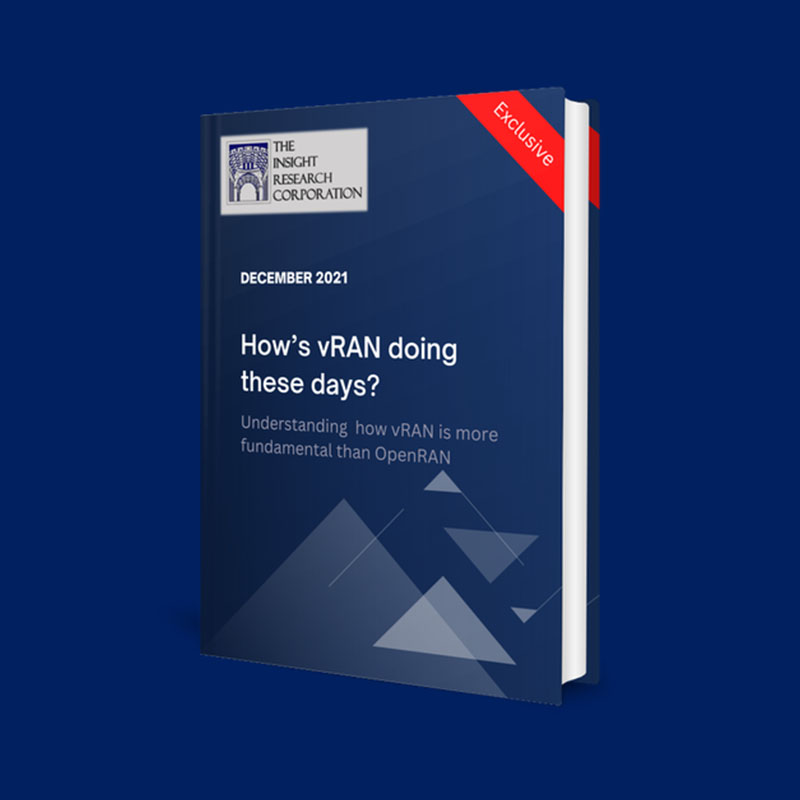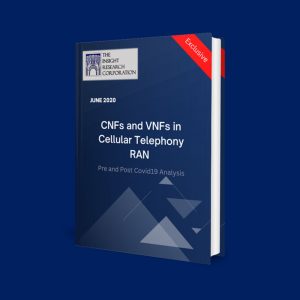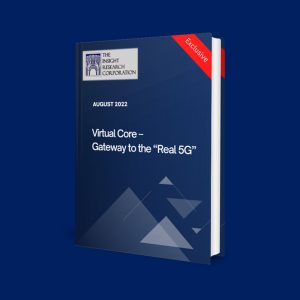Table of Contents
- Executive Summary
1.1 What about Open RAN?
1.2 Has vRAN changed form?
1.2.1 VM-based vRAN
1.2.2 Container-based vRAN
1.3 Market Overview
- Virtualization of Network Functions
2.1 Introduction
2.2 VM-based Approach; a.k.a. NFV Earlier
2.2.1 VNFi/NFVi
2.2.2 MANO
2.2.2.1 Virtualized Infrastructure Manager (VIM)
2.2.2.2 VNF Manager (VNFM)
2.2.2.3 NFV Orchestrator (NFVO)
2.2.3 VNF
2.3 Container-based Approach; a.k.a. CNF Earlier
2.3.1 What are Containers?
2.3.2 Microservices
2.3.3 Container Morphology
2.3.3.1 Provisioning and Run-time Management Block
2.3.3.1.1 Docker Engine
2.3.3.2 Orchestration Block
2.3.3.2.1 Kubernetes
2.3.3.3 Application Deployment Block
2.3.4 CNCF
2.4 Contrasting VMs and Containers
- Virtualization of the RAN
3.1 The RAN and its Evolution
3.1.1 Closer Look at E-UTRAN
3.1.2 5G- NR, NSA and SA
3.1.3 MEC
3.2 The Progression of the RAN to the vRAN
3.3 How VM-based and Container-based vRANs Compare?
3.3.1 The Need for Containers
3.3.1.1 Advantage Containers
3.3.1.2 Challenges Confronting Containers
3.3.2 The Rigid CPRI
3.4 RAN Virtualization – A Story of Alliances
3.4.1 O-RAN Alliance
3.4.1.1 Architecture and Approach to RAN Layer Split
3.4.2 Open vRAN (O-vRAN)
3.4.2.1 Architecture and Approach to RAN Layer Split
3.4.3 Telecom Infra Project (TIP) OpenRAN
3.4.3.1 Architecture and Approach to RAN Layer Split
- Telco Profiles
4.1 Telco profiles
4.2 Airtel
4.2.1 VM and Container-based vRAN Initiatives
4.3 AT&T
4.3.1 VM and Container-based vRAN Initiatives
4.4 BT
4.4.1 VM and Container-based vRAN Initiatives
4.5 China Mobile
4.5.1 VM and Container-based vRAN Initiatives
4.6 China Telecom
4.6.1 VM and Container-based vRAN Initiatives
4.7 China Unicom
4.7.1 VM and Container-based vRAN Initiatives
4.8 Deutsche Telekom
4.8.1 VM and Container-based vRAN Initiatives
4.9 Etisalat
4.9.1 VM and Container-based vRAN Initiatives
4.10 Jio
4.10.1 VM and Container-based vRAN Initiatives
4.11 KDDI
4.11.1 VM and Container-based vRAN Initiatives
4.12 KT
4.12.1 VM and Container-based vRAN Initiatives
4.13 LG Uplus
4.13.1 VM and Container-based vRAN Initiatives
4.14 M1 Singapore
4.14.1 VM and Container-based vRAN Initiatives
4.15 NTT DoCoMo
4.15.1 VM and Container-based vRAN Initiatives
4.16 Ooredoo
4.16.1 VM and Container-based vRAN Initiatives
4.17 Optus (Singtel Optus)
4.17.1 VM and Container-based vRAN Initiatives
4.18 Orange
4.18.1 VM and Container-based vRAN Initiatives
4.19 Rakuten
4.19.1 VM and Container-based vRAN Initiatives
4.20 Saudi Telecom (STC)
4.20.1 VM and Container-based vRAN Initiatives
4.21 Singtel
4.21.1 VM and Container-based vRAN Initiatives
4.22 SK Telecom
4.22.1 VM and Container-based vRAN Initiatives
4.23 Softbank
4.23.1 VM and Container-based vRAN Initiatives
4.24 Swisscom
4.24.1 VM and Container-based vRAN Initiatives
4.25 T-Mobile
4.25.1 VM and Container-based vRAN Initiatives
4.26 TIM/Telecom Italia
4.26.1 VM and Container-based vRAN Initiatives
4.27 Telenor
4.27.1 VM and Container-based vRAN Initiatives
4.28 Telefonica
4.28.1 VM and Container-based vRAN Initiatives
4.29 Telia
4.29.1 VM and Container-based vRAN Initiatives
4.30 Telkom Indonesia
4.30.1 VM and Container-based vRAN Initiatives
4.31 Telstra
4.31.1 VM and Container-based vRAN Initiatives
4.32 Turk Telecom
4.32.1 VM and Container-based vRAN Initiatives
4.33 Turkcell
4.33.1 VM and Container-based vRAN Initiatives
4.34 Veon VimpelCom
4.34.1 VM and Container-based vRAN Initiatives
4.35 Verizon
4.35.1 VM and Container-based vRAN Initiatives
4.36 Vodafone
4.36.1 VM and Container-based vRAN Initiatives
- Solution Provider Profiles
5.1 Containers and the Vendors
5.2 Organization Categories
5.2.1 Telecommunications Domain Experts
5.2.2 DAS Specialists
5.2.3 Equipment Vendors
5.2.4 Independent Software Vendors (ISV)
5.2.5 Semiconductor Specialists
5.2.6 Hardware, OS and Firmware Specialists
5.2.7 Niche Solution Developers
5.3 Company Profiles
5.4 6WIND
5.4.1 VM and Container-based vRAN Initiatives
5.4.1.1 6WINDGate
5.4.1.2 Other Developments
5.5 Accelleran
5.5.1 VM and Container-based vRAN Initiatives
5.5.1.1 dRAX
5.5.1.2 Other Developments
5.6 Airspan
5.6.1 VM and Container-based vRAN Initiatives
5.6.1.1 Air5G OpenRange
5.6.1.1.1 OpenRANGE Software,
5.6.1.2 AirSymphony
5.6.1.3 Other Developments
5.7 Altiostar
5.7.1 VM and Container-based vRAN Initiatives
5.7.1.1 Altiostar – vRAN
5.7.1.1.1 Open vRAN software
5.7.1.1.2 vBBU
5.7.1.1.3 Radio
5.7.1.2 Other Developments
5.8 Amarisoft
5.8.1 VM and Container-based vRAN Initiatives
5.8.1.1 LTE and 5G NR software
5.8.1.2 Other Developments
5.9 ASOCS
5.9.1 VM and Container-based vRAN Initiatives
5.9.1.1 Cyrus 4.0
5.9.1.2 Other Developments
5.10 Cisco Systems
5.10.1 VM and Container-based vRAN Initiatives
5.10.2 Open vRAN
5.10.2.1 Other Developments
5.11 Commscope
5.11.1 VM and Container-based vRAN Initiatives
5.11.1.1 OneCell Controller
5.11.1.2 Other Developments
5.12 Dali Wireless
5.12.1 VM and Container-based vRAN Initiatives
5.12.1.1 Dali – Matrix vFI
5.12.1.2 Other Developments
5.13 Dell EMC
5.13.1 VM and Container-based vRAN Initiatives
5.13.1.1 Open Networking Switches
5.13.1.2 Virtual Edge Platform
5.13.1.3 Other Developments
5.14 Ericsson
5.14.1 VM and Container-based vRAN Initiatives
5.14.1.1 Cloud Native Application (CNA)
5.14.1.2 vRAN
5.14.1.3 Cloud-native NFVi
5.14.1.4 Cloud RAN
5.14.1.5 Other Developments
5.15 Huawei
5.15.1 VM and Container-based vRAN Initiatives
5.15.1.1 5G RAN Gear
5.15.1.2 Other Initiatives
5.16 Intel
5.16.1 VM and Container-based vRAN Initiatives
5.16.1.1 RAN
5.16.1.2 Silicon Photonics
5.16.1.3 Other Developments
5.17 JMA Wireless
5.17.1 VM and Container-based vRAN Initiatives
5.17.1.1 XRAN Adaptive Baseband Software
5.17.1.2 Other Developments
5.18 Mavenir
5.18.1 VM and Container-based vRAN Initiatives
5.18.1.1 4G/5G OpenRAN
5.18.1.2 vRAN
5.18.1.3 Open vRAN
5.18.1.4 Other Developments
5.19 NEC/Netcracker
5.19.1 VM and Container-based vRAN Initiatives
5.19.1.1 Open vRAN
5.19.1.2 Radio Units (RU)
5.19.1.3 Other Developments
5.20 Nokia
5.20.1 VM and Container-based vRAN Initiatives
5.20.1.1 Nokia – AirScale
5.20.1.2 Other Developments
5.21 Parallel Wireless
5.21.1 VM and Container-based vRAN Initiatives
5.21.1.1 OpenRAN
5.21.1.2 Other Developments
5.22 Phluido
5.22.1 VM and Container-based vRAN Initiatives
5.22.1.1 Phluido – vRAN Layer-1
5.22.1.2 Radio-as-a-Service (RaaS)
5.22.1.3 Other Developments
5.23 Platform9
5.23.1 VM and Container-based vRAN Initiatives
5.23.1.1 Open-Source SaaS Managed Solution
5.23.1.2 Other Developments
5.24 Radisys
5.24.1 VM and Container-based vRAN Initiatives
5.24.1.1 MobilityEngine
5.24.1.2 Open RAN
5.24.1.3 Other Developments
5.25 Red Hat
5.25.1 VM and Container-based vRAN Initiatives
5.25.1.1 OpenShift Container Platform
5.25.1.2 Ansible
5.25.1.3 Other Developments
5.26 Robin.io
5.26.1 VM and Container-based vRAN Initiatives
5.26.1.1 Other Developments
5.27 Samsung
5.27.1 VM and Container-based vRAN Initiatives
5.27.1.1 vRAN
5.27.1.2 Other Developments
5.28 VMware
5.28.1 VM and Container-based vRAN Initiatives
5.28.1.1 NSX
5.28.1.2 X-Factor
5.28.1.3 Telco Cloud Platform RAN
5.28.1.4 Other Developments
5.29 Wind River
5.29.1 VM and Container-based vRAN Initiatives
5.29.1.1 Titanium Cloud Product Portfolio
5.29.1.2 Kubernetes
5.29.1.3 Wind River Studio
5.29.1.4 Other Developments
5.30 ZTE
5.30.1 VM and Container-based vRAN Initiatives
5.30.1.1 TECS
5.30.1.2 Other Developments
- Quantitative Forecasts
6.1 Report Taxonomy
6.2 Research Methodology
6.3 Foreword
6.3.1 Container Morphology
6.3.2 Deployment Methodology
6.3.3 Geographical Regions
6.4 Global Markets
6.4.1 End Users
6.4.2 RAN Morphology
6.4.3 Hosting Modes
6.4.4 Geographical Regions
6.5 VM-based vRAN Market
6.5.1 NFV Component
6.5.2 End-user
6.5.3 RAN Morphology
6.5.4 Hosting Mode
6.5.5 Geographical Regions
6.6 Container-based vRAN Market
6.6.1 Container Morphology
6.6.2 End-user
6.6.3 RAN Morphology
6.6.4 Hosting Mode
6.6.5 Deployment Methodology
6.6.6 Geographical Regions




